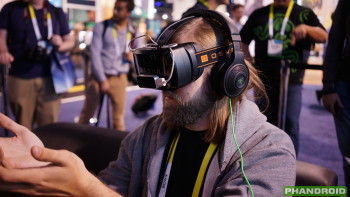
Razer’s Open Source Virtual Reality headset wants to do for VR what Android did for phones [VIDEO]
Oculus was the first big step in realizing a consumer-ready virtual reality product, though there’s no secret it hasn’t come without its fair share of bumps and bruises. Between immature SDKs and a slow pace of iteration and innovation, Oculus Rift and friends (such as the Samsung Gear VR we reviewed) haven’t been enough to make virtual reality a viable commercial success for your everyday Joe Schmo.
Enter Razer’s vision — the Open Source Virtual Reality kit. Razer says they want to do for virtual reality what Android did for phones. Open source, open schematics and open visions for anyone who wants to use it.
More than wanting to simply sell a product to fatten their pocket books, Razer’s goal is to push virtual reality as a whole further, and they hope giving folks unadulterated access to the technology and schematics to make virtual reality headsets will help in achieving that goal.
Their current prototype is quite interesting, though a technical marvel it is not. It has a full HD 5.5-inch display to dish out the visuals you’ll be viewing, and its need to be attached to a bridge connection (which you’ll clip onto your belt or back pocket) while it’s hooked up to a PC doesn’t exactly scream “ideal.” That’s especially true considering something like the Samsung Gear VR will give you more than double the resolution and without having to be tethered to anything.
That said, this doesn’t cost as much as the Samsung Gear VR and Galaxy Note 4 combined: you’ll be paying at least $1,000 for that whole kit and caboodle (less if you opted to go with a two-year contract for the phone bit). For $200, the OSVR is affordable and allows developers an inexpensive ticket to jump into the fray and start building great virtual reality tools and experiences.
And if you’re fortunate enough to have the resources to build your own headset, Razer’s done all the heavy lifting for you thanks to their detailed schematics and open access to the SDK driving the platform. Their hope, should everything go as planned, is that this will accelerate the virtual reality market to new heights, whether it’s them being the recipient of much-deserved attention or someone who uses their schematics to build something of their own.
We took the OSVR for a quick spin at CES, the video of which rests above. You’ll want to watch it even if it does nothing to give you an idea of what virtual reality is like — Kevin looks just as ridiculous testing it out on the big show floor as he did in his Samsung Gear VR review.